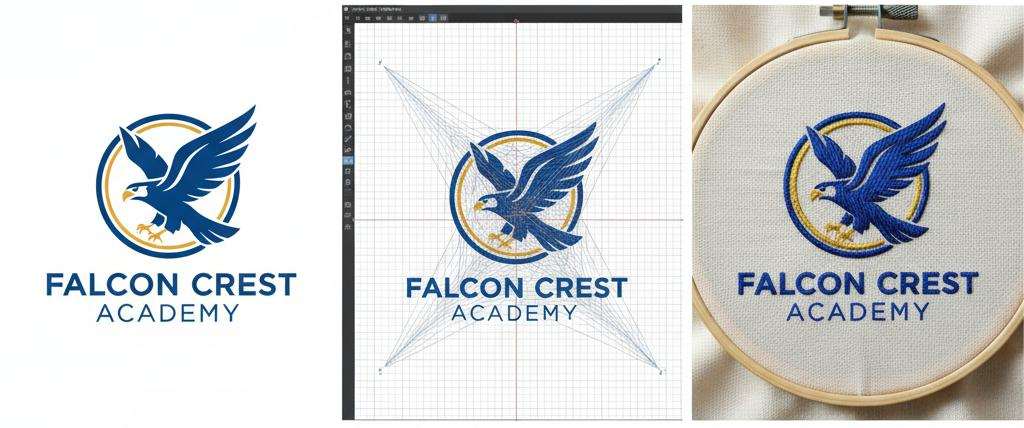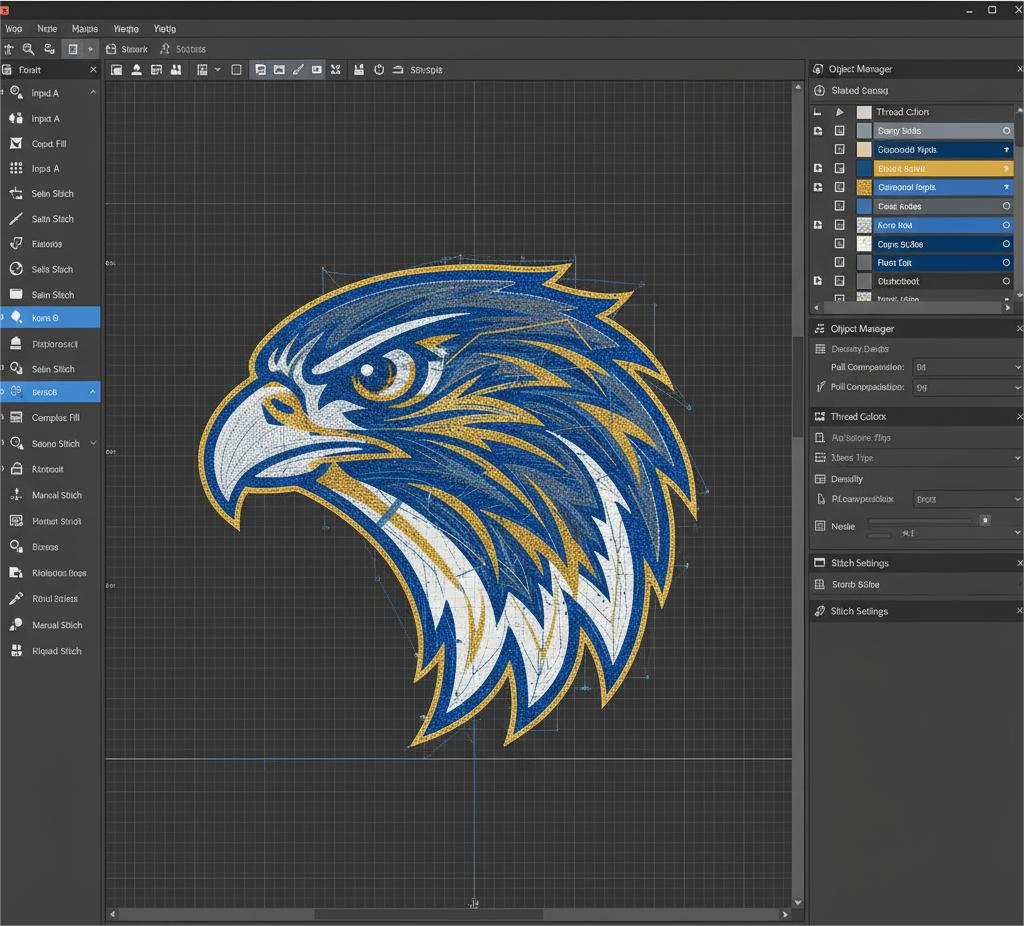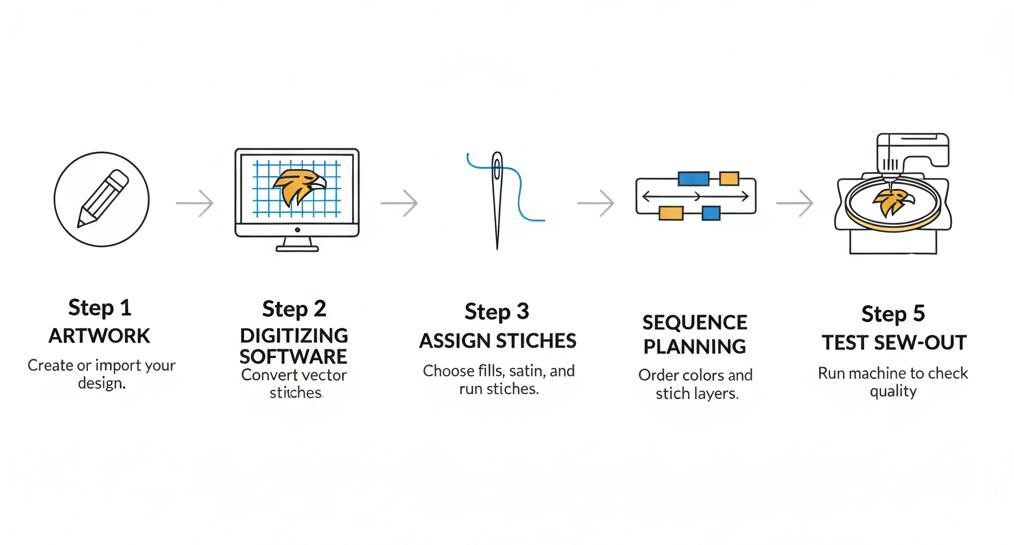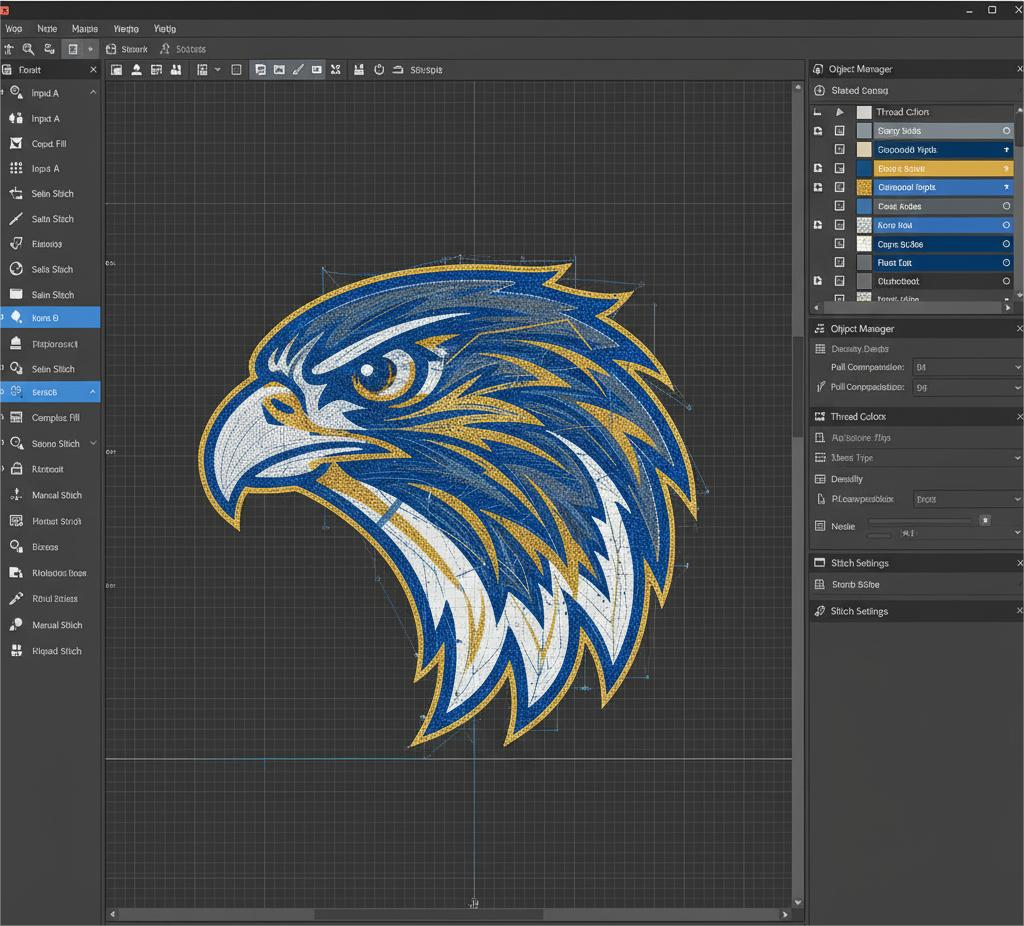Introduction: From Artwork to Stitches
Have you ever seen a logo on a polo shirt or a monogram on a cap and wondered how it’s stitched so perfectly? The secret is embroidery digitizing. It’s the process that transforms artwork into a machine-readable embroidery file — the first and most important step in professional embroidery.

What is Embroidery Digitizing?
Embroidery digitizing is the process of converting an image (like a logo, text, or illustration) into a stitch file that embroidery machines can understand.
Unlike JPGs or PNGs, a digitized file contains instructions such as:
- Stitch type (satin, fill, or run)
- Stitch direction and length
- Color sequence
- Layering order
Common file formats include DST, PES, EXP, JEF, VP3, depending on the machine brand.

Why Embroidery Digitizing Matters
Good digitizing = good embroidery. Even the most advanced machine won’t produce clean results if the file is poorly digitized.
Benefits of professional digitizing:
✅ Clean, sharp designs without puckering
✅ Saves time by reducing machine errors
✅ Versatility across fabrics and products
✅ Consistent results for bulk production
The Embroidery Digitizing Process (Step by Step)
- Prepare the Artwork – Clean and resize the logo or design.
- Import into Software – Tools like Wilcom, Hatch, or Brother PE-Design are used.
- Assign Stitch Types – Satin for letters, fill for solid areas, run for outlines.
- Plan Stitch Sequence – Optimized for efficiency and fewer thread trims.
- Test Sew-Out – A sample is stitched on fabric to ensure quality.

Common Stitch Types in Digitizing
- Satin Stitch – Smooth and shiny, best for text and borders.
- Fill Stitch – Dense stitch for large areas of color.
- Run Stitch – Lightweight stitch for outlines and underlay.
Auto-Digitizing vs. Professional Digitizing
- Auto-Digitizing
- Quick, done with one click.
- Works for simple designs.
- Often results in uneven stitches and poor quality.
- Quick, done with one click.
- Professional Digitizing
- Done manually by skilled digitizers.
- Adjusted for fabric type, density, and stitch flow.
- Delivers crisp, production-ready results.
- Done manually by skilled digitizers.
Who Needs Embroidery Digitizing?
Digitizing services are essential for:
- Apparel & fashion brands
- Promotional product companies
- Sports teams & clubs
- Custom gift shops
- Embroidery hobbyists with home machines
FAQs About Embroidery Digitizing
Q1: Can I use a regular image file (JPG/PNG) for embroidery?
No. Embroidery machines need a digitized file (DST, PES, etc.) to stitch correctly.
Q2: How much does embroidery digitizing cost?
It depends on the complexity of the design — simple logos may cost a few dollars, while detailed artwork may be higher.
Q3: Can auto-digitizing software replace professional digitizers?
Not really. Auto software struggles with details, small text, and stitch density adjustments. For quality results, professional digitizing is the best option.

